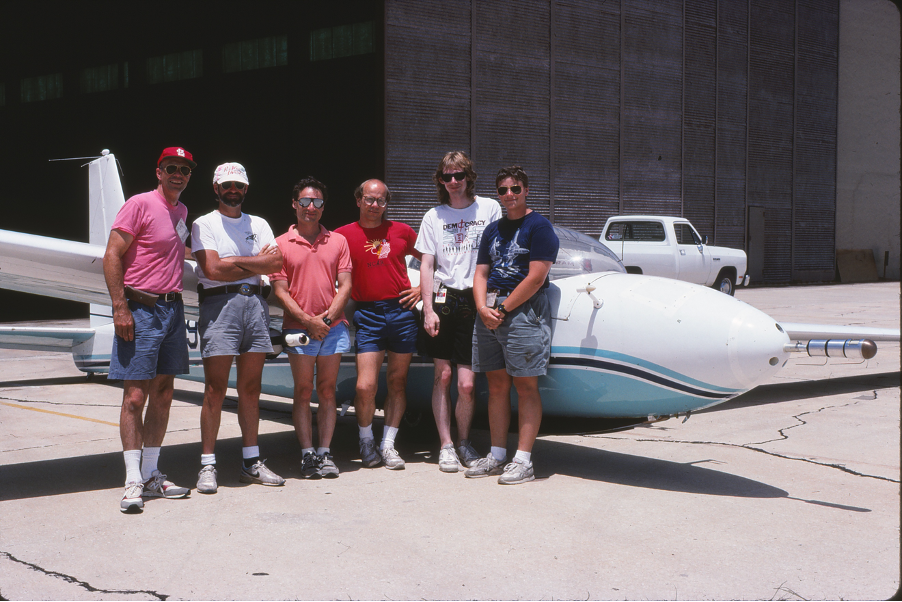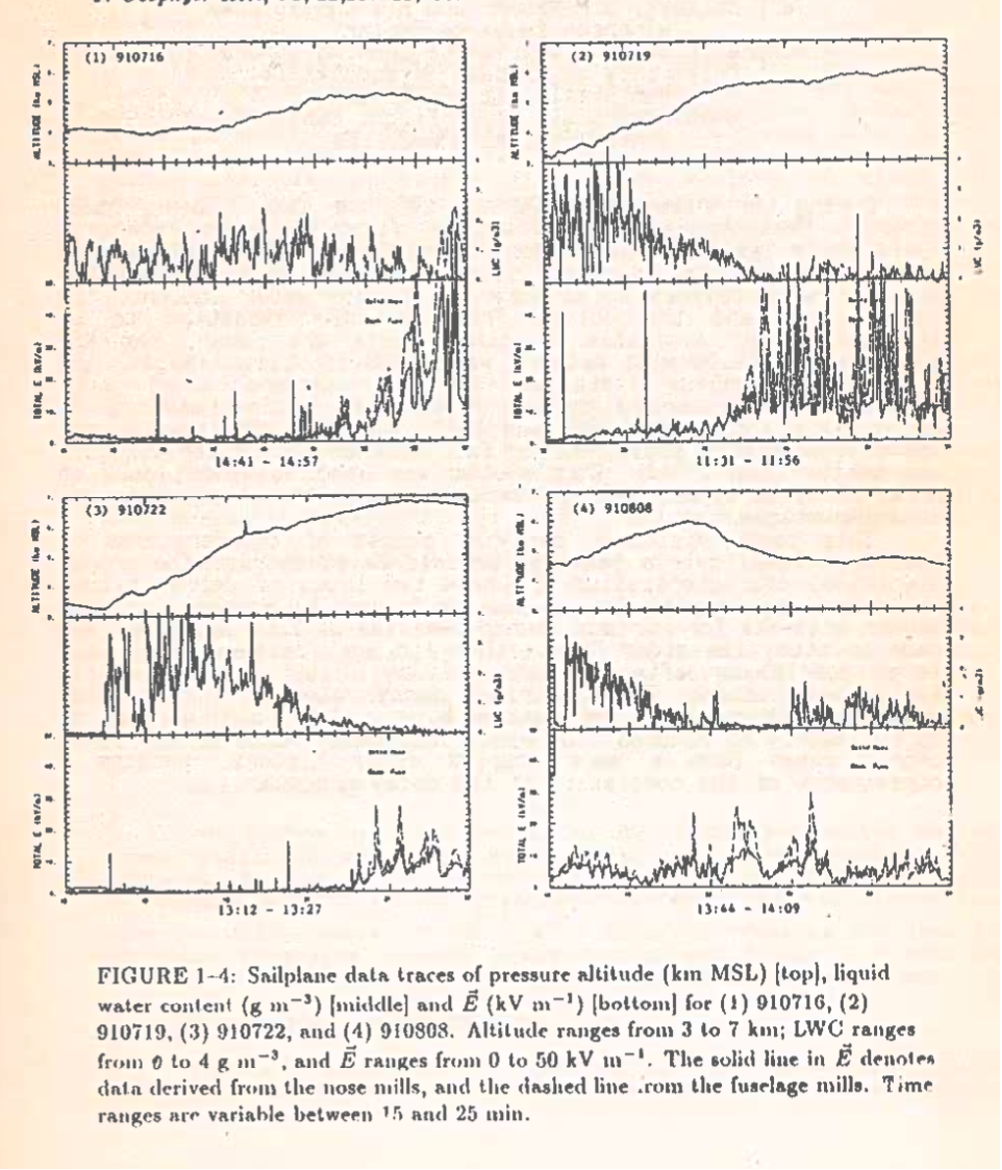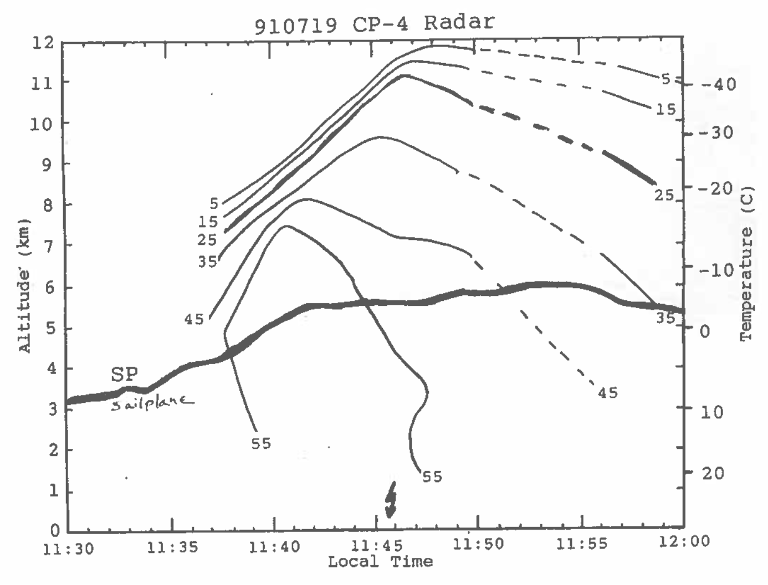In the late 1980s there was significant interest in knowing more about, precipitation, and electrification in cumulus clouds near Kennedy Space Center Florida. This was in many ways motivated by the triggering of lightning during launch of the Atlas Centaur rocket in 1987 and the subsequent loss of millions of dollars of communications equipment. As a result, the Convection and Precipitation/Electricity Experiment (CaPE) was conducted in east central Florida near Kennedy Space Center (KSC) in July and August of 1991 to learn more about the relationship between air motion, precipitation and electrification. It was a highly organized, coordinated project with 8 instrumented aircraft of which 5 were cloud penetrating aircraft equipped with microphysical instruments and electric field mills, 5 radars with 3 Doppler radars, multiple surface and upper air meteorological networks, the KSC network of ~30 surface electric field mills, the KSC Lightning and Detection and Ranging system to detect the location of lightning flashes and branches within storms, and 10 satellite systems viewing the area. For more information on the CaPE project go to the URL: https://opensky.ucar.edu/islandora/object/manuscripts%3A686.
Fig. 33 shows a photograph of the sailplane crew standing in front of Explorer in front of the hangar at Patrick Air Force Base Florida during CaPE.
Fig. 33 A photograph of Explorer crew for CaPE. From left to right: Bruce Miller, pilot; Jim Dye, scientific lead; Jeff Bogen, technician; Dan Breed, sailplane operations manager; Robert Solomon, Ph.D student from the Univ. of Washington; and Keith Barr, NCAR student assistant. Photo courtesy of Keith Barr.
One broad objective of CaPE was to examine the relationships between co-evolving air motions, precipitation, and electrification in growing cumulus congestus clouds. From the cloud electrification point of view there was much interest in contrasting the many measurements made on the high plains such as Colorado, Montana, and New Mexico with those of Florida. On the high plains cloud bases are high and relatively cold (+10 to 0 oC). In contrast in Florida the cloud bases are low in altitude and very warm (~20 oC). Research discussed earlier in this document has shown that the process of precipitation formation on the high plains is dominated by the Findeisen-Bergeron mechanism of ice formation. Whereas in Florida the coalescence process is very active in forming precipitation-sized drops even before the cloud tops reach 0 oC. One question to be addressed in CaPE was “Are the mechanisms that electrify the storms similar in both regions?”
Explorer flights as well as radar and other aircraft observations showed that the nature of convection in Florida was more bubble-like rather than plume-like compared to that found on the high plains, so updrafts were smaller (2-4 km diameter) and not as continuous, lasting typically only 10 to 20 min. This made it more difficult for the sailplane to find suitable updrafts for long spiraling ascents. In CaPE the sailplane typically released from tow and penetrated the cloud at about 4 km (3 km above cloud base) to seek the updraft. Explorer rarely climbed above 6 km (-8 oC) in CaPE. Additionally, with 5 penetrating aircraft, coordination was difficult, the sailplane sometimes was not given the priority for vertical air space that it needed to spiral vertically over a large altitude range in the updraft. None-the-less valuable observations were made by Explorer. As expected, coalescence was active in the Florida clouds and rain drops appeared in clouds even at temperatures warmer than 0 oC. Explorer observations as well as those by the NCAR King Air showed that the onset of electrification (>1-2 kV/m) did not occur until cloud tops reached as cold as -7 to -8 oC even though precipitation formation via coalescence was active lower in the cloud. Appreciable ice had not yet developed in these unelectrified clouds.
For CaPE the sailplane was equipped with eight electric field mills, four housed around a single cylinder mounted on a nose boom ahead of the fuselage (Breed and Dye 1989). and four mounted about the center of the fuselage like those described by Jones (1990). Measurements from four separate Explorer flights are show in Fig. 34 a duplication of Figs. 1 to 4 from Breed et al., (1992). The dates are given in the format YYMMDD. Explorer entered these four clouds before lightning was detected in any of them. Each of the four figures shows altitude (a proxy for updraft) in the top panel, liquid water content (a proxy for upward motion and cloud development) in the middle panel, and the electric field observed by both the nose and fuselage mounted field mills in the lowest panel. The absolute calibrations of the field mill system had not been completed at the time of the presentation of Breed et al., 1992. It is apparent in Figs. 34 that during periods with stronger electric fields, values from the fuselage mills were much larger than those from the nose mills. However, measurements from both sets of mills show similar patterns with weaker electric fields during the early stage of the sailplane ascents and the strong fields of >10 kV/m appearing as the cells are at their peak altitude or weakening. This development of large fields as the storms decayed was different from the results of Dye et al., (1989) and Breed and Dye (1989) in New Mexico where the electrification primarily occurred during periods of active growth of the clouds.
Fig. 34 A duplication of figure 1 through 4 in Breed et al., 1992.
The time-altitude plot of reflectivity for the 910719 case (the upper right plots in Fig 34) is presented in Fig. 35. From Fig 34 (2) we see that the observed electric field was increasing very gradually from < 1 to about 3 kV/m from 1131 to 1141. However, beginning at about 1141 the observed electric field increased more rapidly reaching 10 kV/m by 1143. This more rapid increase in the electric field occurs at a time when the radar cloud top was growing and exceeded about 8.5 km at about 1141 in Fig. 35.
The measurements shown in Figs.34 and 35 are consistent with those reported by Bringi et al, 1997 for another Florida cloud in CaPE. Despite the presence of active coalescence detected by multi-parameter radar in their Florida storm, Bringi et al, 1997 found that the condition for initial electrification found by Dye et al, 1989 in New Mexico of about 40 dBZ at 6 km (-8 oC) with a cloud top of about 8 km fit with the Bringi et al, 1997 findings in Florida. The same mechanism of electrification seemed to be similar in the two very different geographical locations with different primary mechanisms of precipitation formation. Even though coalescence was very active in early stages of cloud development, strong electrification did not occur until ice developed in the cloud. With coalescence occurring early in cloud growth there had to have been drop-drop interactions but these did not lead to strong electric fields. Therefore, it seems unlikely that an inductive mechanism with collisions between water hydrometeors interactions is an effective electrification mechanism at least until strong fields develop in the cloud.
Fig. 35 Time-altitude reflectivity profile for the 910719 (July 19, 1991) storm investigated by the Explorer. Time for the first lightning is shown as 1146. The onset of electrification shown in Fig. 34 was about 1141.
- Explorer Participation in the National Hail Research Experiment (NHRE)
- Precipitation Formation via the Ice Process in NE Colorado
- The Discovery by Explorer of Adiabatic Ascent in Clouds of the High Plains
- Discovery of Penetrative Downdrafts
- Observation of a Counter Rotating Vortex Pair in a Cumulonimbus
- Explorer Observations of Silver Iodide Seeding in Cumulus Clouds
- Studies of Initial Cloud Electrification with Explorer
- Electrical/Microphysical Measurements in New Mexico
- Measurements on Explorer of Particle Charge, Size and Shape
- Flight in New Mexico to 40,200 ft with Particle Image and Charge Measurements
- Results from CaPE in Florida in 1991


